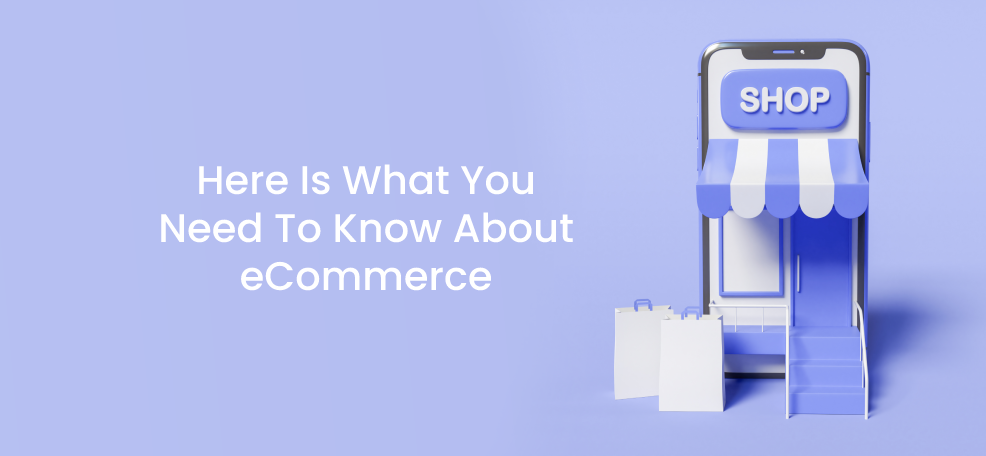The e-commerce industry is increasing due to expected growth and the impact of 2020 on retail. Every day, more and more retailers switch to online sales as businesses move into e-commerce.
By 2022, e-commerce sales will grow from $3.53 trillion in 2019 to $6.54 trillion. However, eCommerce is an ever-changing industry. Several new trends emerge each year to help your business grow and stay one step ahead of the competition – 2021 will be no exception.
What is eCommerce?
E-commerce or electronic commerce refers to transactions made over the Internet. Every time people and businesses buy or sell products and services online, they do e-commerce. The concept of eCommerce also covers other activities, such as online auctions, online banking, payment gateways, and online tickets.

How eCommerce came to be
In 1994, Jeff Bezos founded Amazon as an online shop and initially sold over a million different books. Amazon is finally becoming the most popular online retailer where consumers can buy any product.
In the mid-1990s and early 2000s, people added computers to their homes, paving the way for the growth of e-commerce. Businesses accepted checks from the early to mid-1990s because there was no gateway to online payments to transfer money from customers to companies.
In the 2000s, Shopify, WordPress, and other similar platforms allowed companies to build their businesses without a bit of feature development. With that, the barrier to entry fell. Anyone with a computer on the Internet and a little capital can easily open an online shop.
In 2008, online sales accounted for 3.4 percent of total sales, reflecting industry growth. There were 12-24 million online stores globally in 2014.
Moving forward to 2021, the understanding level between newbies and technical pro shops is getting higher day by day. With time, blogs and online resources of learning are advancing. Anyone can now create an instant shopping website and get an insight into the results of their endeavors in less than six months.
What features should an eCommerce site have?
Various features are a must-have for your eCommerce site. Particular plugin integration, page layout, easy-to-navigate tricks, and a refresh appealing are among those. For product presentation, you can integrate multiple plugins on your online store to give a detailed view of your products, like images, use WooCommerce image zoom, and video-use WooCommerce product video.
An eCommerce site should be SEO optimized for desktop and mobile phones. According to the e-commerce platform Oberlo, mobile commerce revenues will reach $ 2.91 billion in 2020 and $3.56 billion in 2021.
The mobile-friendliness of your platform greatly affects your visitors’ experience because many people use the mobile phone and are more likely to visit your site through their mobile phones, so optimizing your mobile site is mandatory.

The checkout procedure is another important aspect of an e-commerce function. This part was important because it started when the buyer added his required product to the cart. If the process did not become too complicated, and all the process runs smoothly, the buyer makes more purchases, and if the process irritates the buyer, he may leave the product and move to the other website. The Baymart Institute estimates the average dropout rate at 69.57%.
What is eCommerce marketing?
Internet marketing is raising awareness and selling its products or services electronically. To make online purchases run smoothly and successfully, digital marketers run multiple campaigns through social media platforms, SEO campaigns, and creating reliable content.
eCommerce marketing is very much related to eCommerce advertising because all strategies are implementing advertisements.
Let’s understand eCommerce advertising and make it most closely associated with success in the online business.
eCommerce Advertising
Just as advertising is part of the marketing umbrella, e-commerce advertising is part of online marketing – and when you use both, you can reach your audience more effectively to drive conversions and increase brand awareness.
Online marketing is about raising awareness and working on your product or service. In the meantime, eCommerce encompasses the methods you use to promote your product. For online marketing and sales or eCommerce, these advertisements can be in the form of on-screen ads, banner ads, or multimedia materials.
The most important aspect of this is that online business advertising is a very effective method. You can use it to develop an online marketing strategy to promote your product or service.
Different Types of eCommerce Business Models

The following three are the most popular business models that describe the nature of things sold and explain the concerning audience who are most likely to purchase.
-
B2C
In this type of business model, individual customers are concerned, and business activities are directly related to individuals. You can sell everything in this business model, from equipment to entertainment possessing a broad range of products. Examples of B2C retail stores are Amazon, Netflix, and Overstock. From Nike to Tommy Bahamas, most well-known retailers use such an e-commerce website.
-
B2B
When one company sells goods or services to another company over the Internet, it is considered a B2B e-commerce business. These companies can sell products such as home appliances, digital goods, and wholesale products. They also offer online business solutions such as a document signing program and other cloud services.
-
Online Marketplaces
Online marketplaces provide a facility to the third-party sellers who can sell their products and services to the customers through the websites like eBay or Amazon. Walmart.com and many other examples.

As part of your sales, you came up with information regarding customer purchases through different platforms to succeed in a highly competitive eCommerce marketplace. Many marketplaces provide paid services for your payments, logistics, and even social media marketing.
Future of Ecommerce for Retailers
More and more people rely on everything from waking up to shopping for groceries online with tools like Amazon Echo Alexa and Google Home with Google Assistant. By 2025, 75% of US households will have smart speakers. The voice business seems to boost sales by billions in 2021.
Another reason why the voice business is more attractive is the increasing accuracy and usability of the technology. Both Google and Amazon use regional languages for virtual assistants to make shopping more convenient for consumers.
Self-channel retail means providing customers with a great experience through all platforms. In a Harvard Business Review survey, 73% of respondents said they use multiple channels when purchasing. This data is almost four years old.
With the growing proliferation of mobile phones and voice assistants, one can only imagine that the number of multinational customers will continue to grow in 2021.




